Jeep has just revealed its all-new Wrangler to the world, which you can read about in the FYI news section but it will be a while yet before we see that model around here. Recently we were reacquainted with the most Jeep of Jeeps down South in the Mount Aspiring region, westwards of Wanaka.
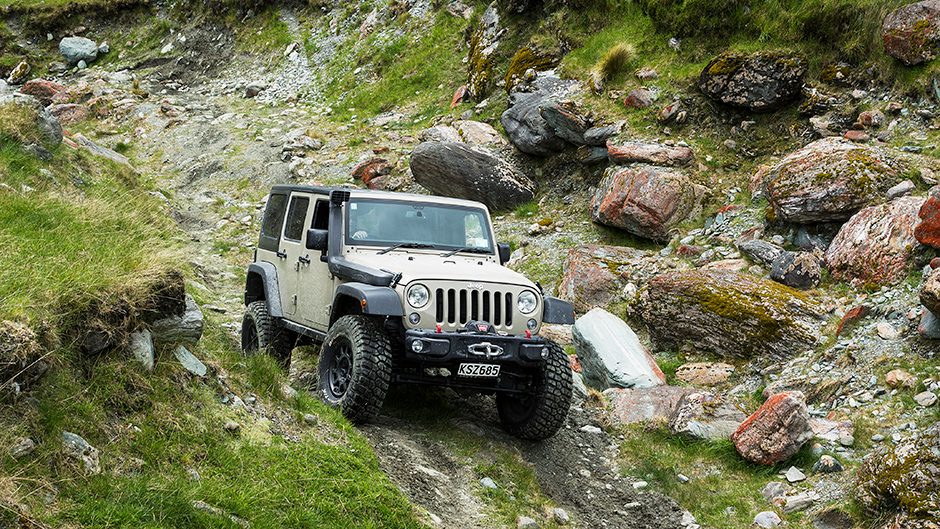
We were tacked onto the tail end of a programme run by the crew from Jeep Jamboree where they had just held the long-lead launch of the all-new Wrangler model for North American journalists. While there was no all-new Wrangler action for us, we did get the opportunity to enjoy the genuine 4×4 ability of the most capable Jeep in a pretty unique setting. It’s not often we get to tackle this sort of off-road work in New Zealand.
Venturing into the Mount Aspiring National Park region along the Matukituki track, we arrived at the bottom of a rocky gully and pointed the machines up the steep and craggy pathway. This kind of rock crawling is what the Wrangler Rubicon is designed to lap up.
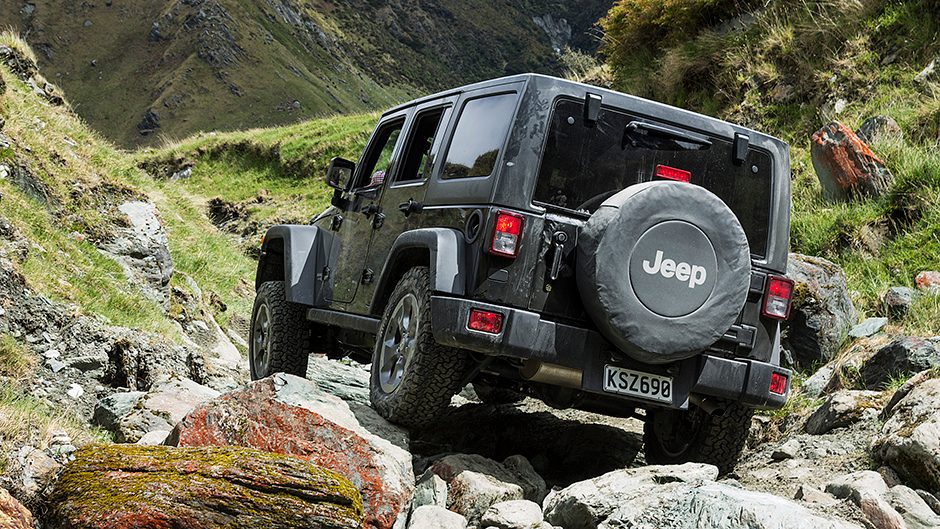
While most Wrangler Unlimited models prance around the city, the Rubicon is the most off-road ready. Like the Sport and Overland models, its 4×4 system moves from rear-wheel drive to 4hi on the fly where there’s a 50/50 torque split, and traction control is used to stop spinning wheels. The Rubicon adds heavy duty axles front and rear and its low range uses a serious 4:1 reduction ratio. There are front and rear locking diffs, and the front stabiliser bar can be electronically disconnected to improve wheel articulation by a further 25 per cent. It adds cost though and the Rubicon Unlimited is a pricey $72,990, $10k more than the Sport.
While the Wrangler is a city friendly off-roader it makes a truckload more sense in environments such as this. That sloppy and slow recirculating ball steering works best off road where the wheel is less inclined to start twirling madly in the ruts. And while the suspension geometry is prone to all sorts of movements on road, it’s perfect in the axle twisting rocks where the front and rear camber stretch in opposite directions as the wheels look for the best grip.
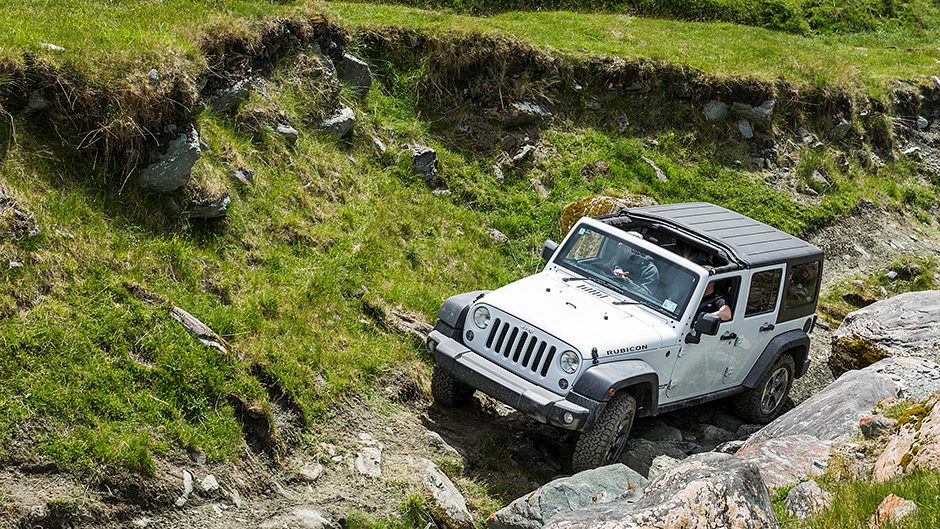
Helping the Wranglers ascend the rocky path were the crew from Jeep Jamboree (check the sidebar for details). Given the tight nature of the gully and the size of some of the boulders, their guidance helped ease progress and keep the Jeeps out of trouble. But instructions only work if they are adhered to and so not all the Jeeps made it through unscathed. Some drivers tested out the Rubicon’s rock rails on the bigger boulders; these steel bars run along the sills to protect the bodywork from major damage, while some front and rear bumpers and alloys wheels were a bit the worse for wear afterwards.
Rock crawling is an exercise in patience and ultimate throttle control. In the low range, the effects of torque multiplication are such that just a touch of gas is required to get you moving over the smaller rocks but more is needed to scale the larger ones.
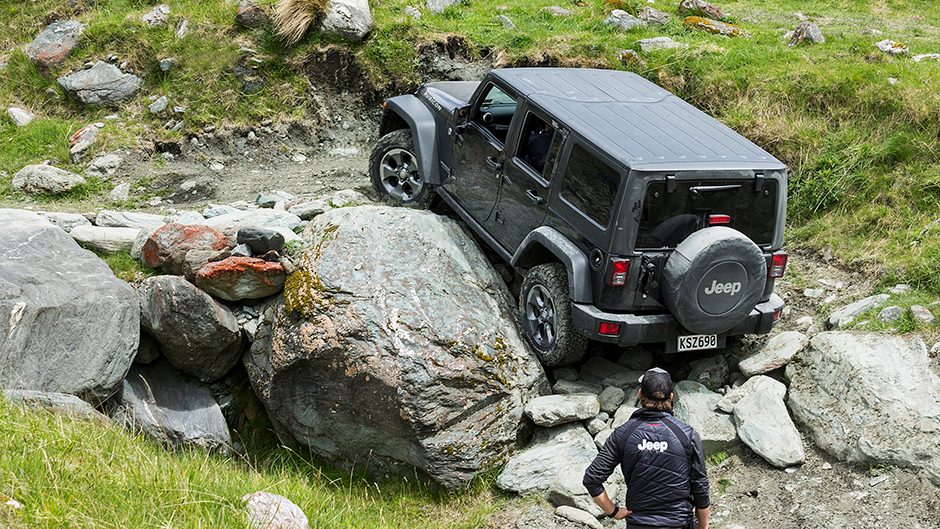
You ease into the gas to ride up over the bigger boulders but then you’re quickly on the brakes to steady the descent and ease the abuse on those chassis rails and sump guards. The left foot braking approach helps, especially as the Wrangler’s brake pedal is set high in relation to the gas. It’s slow speed stuff, picking your way over the rocks, and winding your way past the boulders.
The Wrangler is easy to place as you can see its extremities but its 13.1m turning circle isn’t all that friendly in tight confines. The Jeep Jamboree guys told us the new model is much improved in this regard and was able to make some of the turns in one cut whereas we needed to back up and take another run at them. The Rubicon’s diff lockers help scale the obstacles where loose rocks make traction tricky, and although the ground clearance was near its limits, everyone managed to get the Wranglers through the course, some just a little more carefully than others.
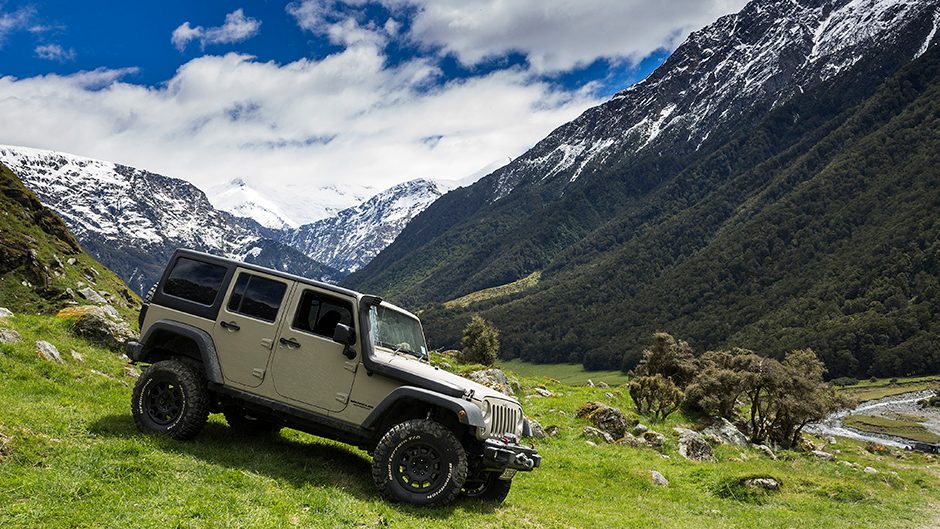
Also present were two Wranglers outfitted for serious adventure with lift kits, uprated shockers, and bigger tyres. These made the passage up seem almost easy, the extra clearance kept the chassis rails clear of the boulders, while the bigger tyres, running minimal pressure, latched onto the rocks like limpets, rolling through the trickier passages that had the standard models struggling for purchase. It was almost like cheating.
Not only do these lift kits add capability, they look truly awesome. But they ain’t cheap, ranging in price from $15,000 to $25,000 fitted, depending on the specification. However, they incorporate quality components like Warn winches, Fox shockers and AEV wheels.
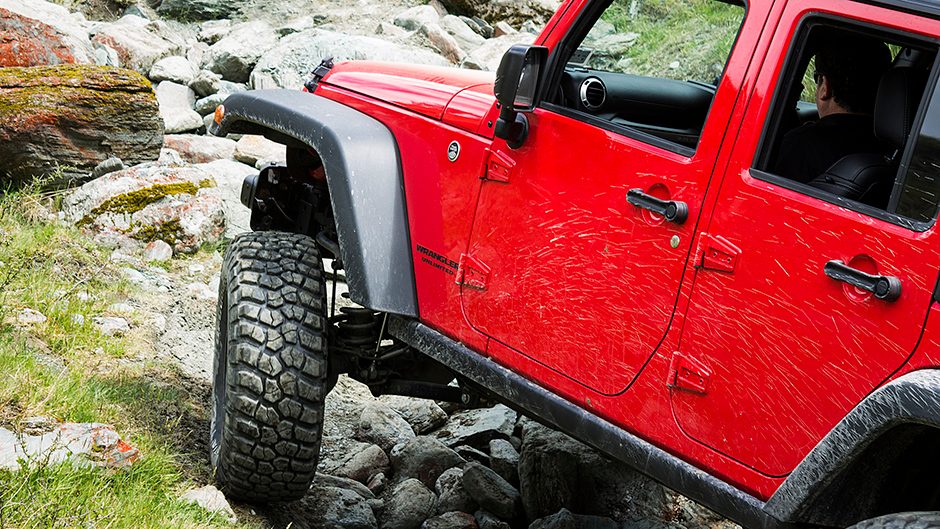
While we probably wouldn’t recommend buying any of the vehicles we drove on the day, we can give the Wrangler Rubicon a big thumbs-up for off-road work; it’s hugely capable.


